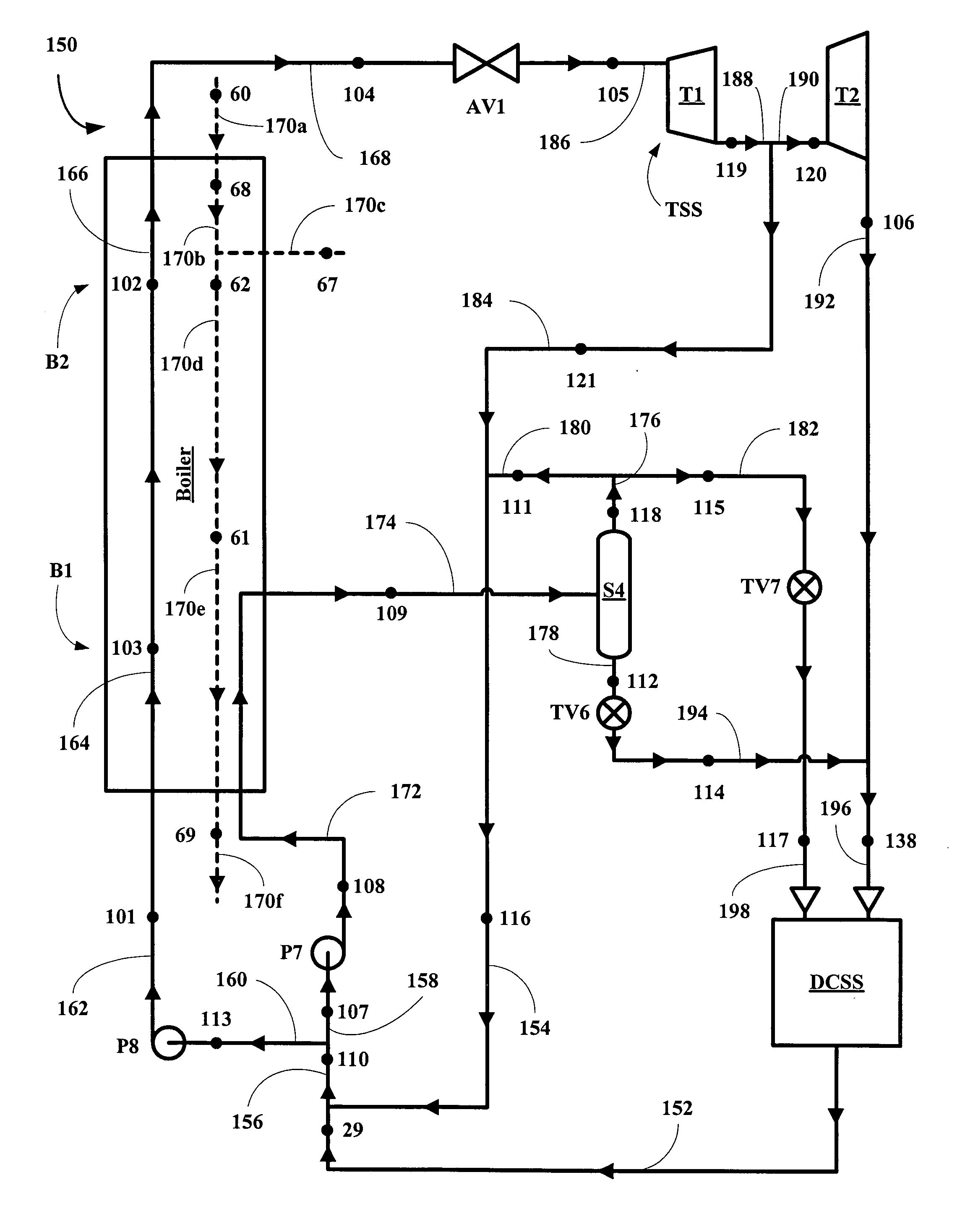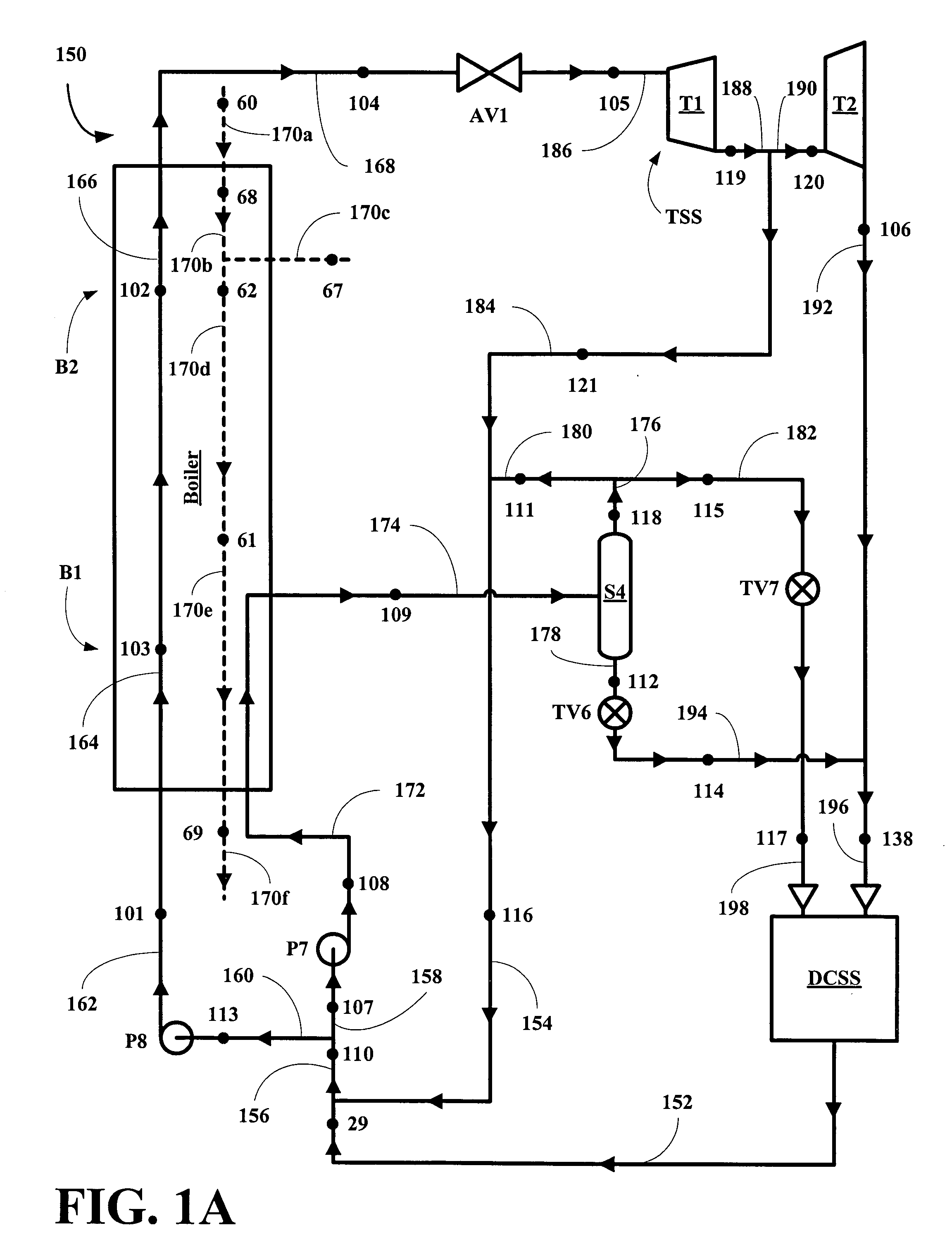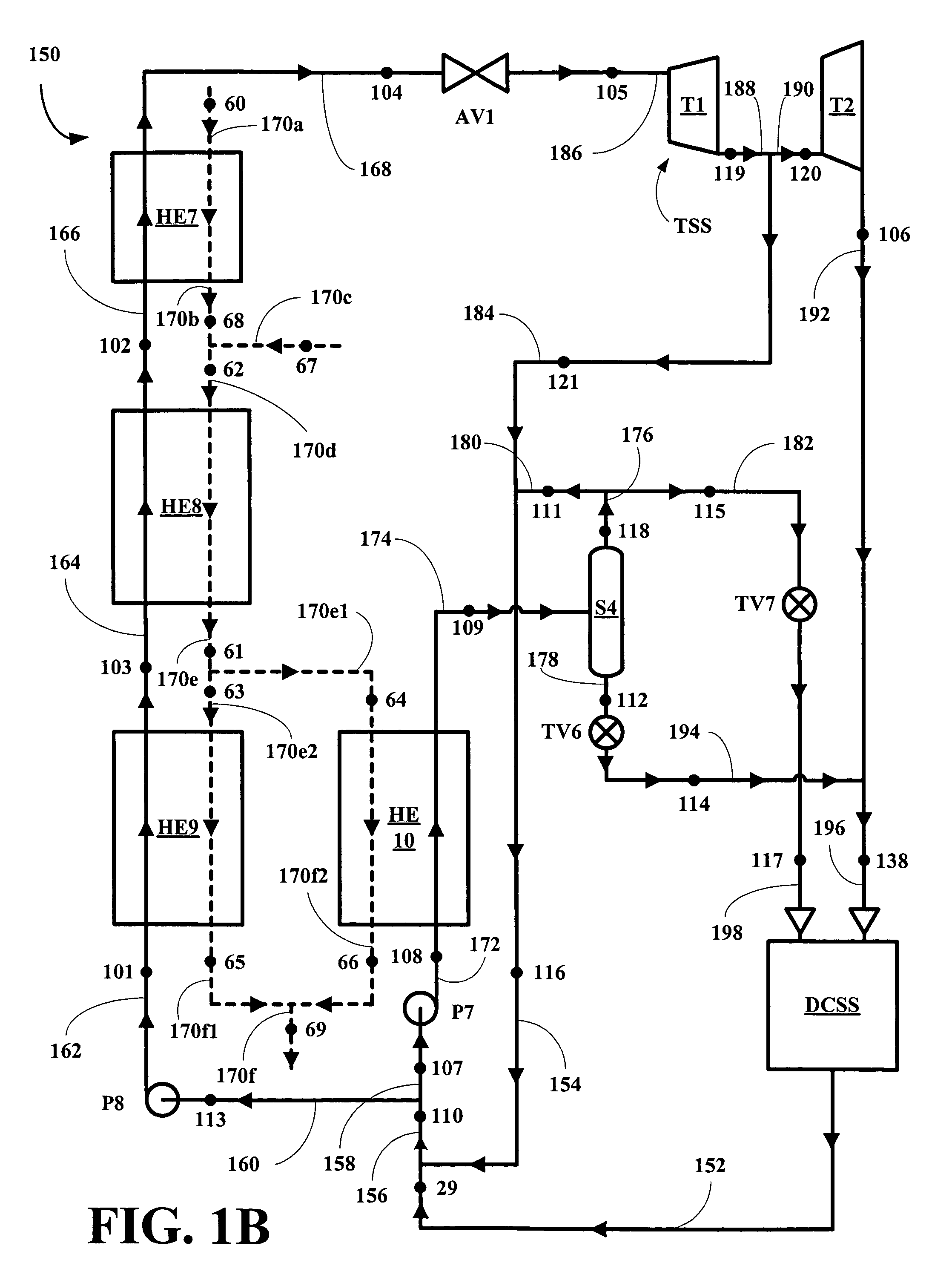Power system and apparatus for utilizing waste heat
a technology of power system and waste heat, which is applied in the direction of reciprocating piston engines, steam engine plants, positive displacement engines, etc., can solve the problems of acute corrosion, adverse effect on the overall efficiency of the system, and gas which “carries” the heat to be utilized, so as to prevent condensation of any corrosive component, increase or decrease certain stream flow rates, and high inlet temperature
- Summary
- Abstract
- Description
- Claims
- Application Information
AI Technical Summary
Benefits of technology
Problems solved by technology
Method used
Image
Examples
Embodiment Construction
[0019]The inventor has found that new more efficient and simpler apparatus, system and method for extracting usable energy from high temperature waste stream, where the system includes a two stage turbine energy extraction subsystem, a distillation-condensation subsystem and a boiler subsystem in a two pressure thermodynamic cycle for converting thermal energy from hot waste streams into mechanical energy and then into electric energy.
[0020]The apparatus of this invention broadly relates to a system includes a boiler subsystem (BSS), a distillation-condensation subsystem (DCSS) and a turbine subsystem (TSS), where the BSS vaporizes (boils) and superheats a working solution stream comprising at least one lower boiling component and at least one high boiling component using heat from external waste heat streams containing corrosive components, which is forwarded through an admission valve to the TSS for energy extraction and conversion to usable mechanical and / or electrical energy. Th...
PUM
 Login to View More
Login to View More Abstract
Description
Claims
Application Information
 Login to View More
Login to View More - R&D
- Intellectual Property
- Life Sciences
- Materials
- Tech Scout
- Unparalleled Data Quality
- Higher Quality Content
- 60% Fewer Hallucinations
Browse by: Latest US Patents, China's latest patents, Technical Efficacy Thesaurus, Application Domain, Technology Topic, Popular Technical Reports.
© 2025 PatSnap. All rights reserved.Legal|Privacy policy|Modern Slavery Act Transparency Statement|Sitemap|About US| Contact US: help@patsnap.com



